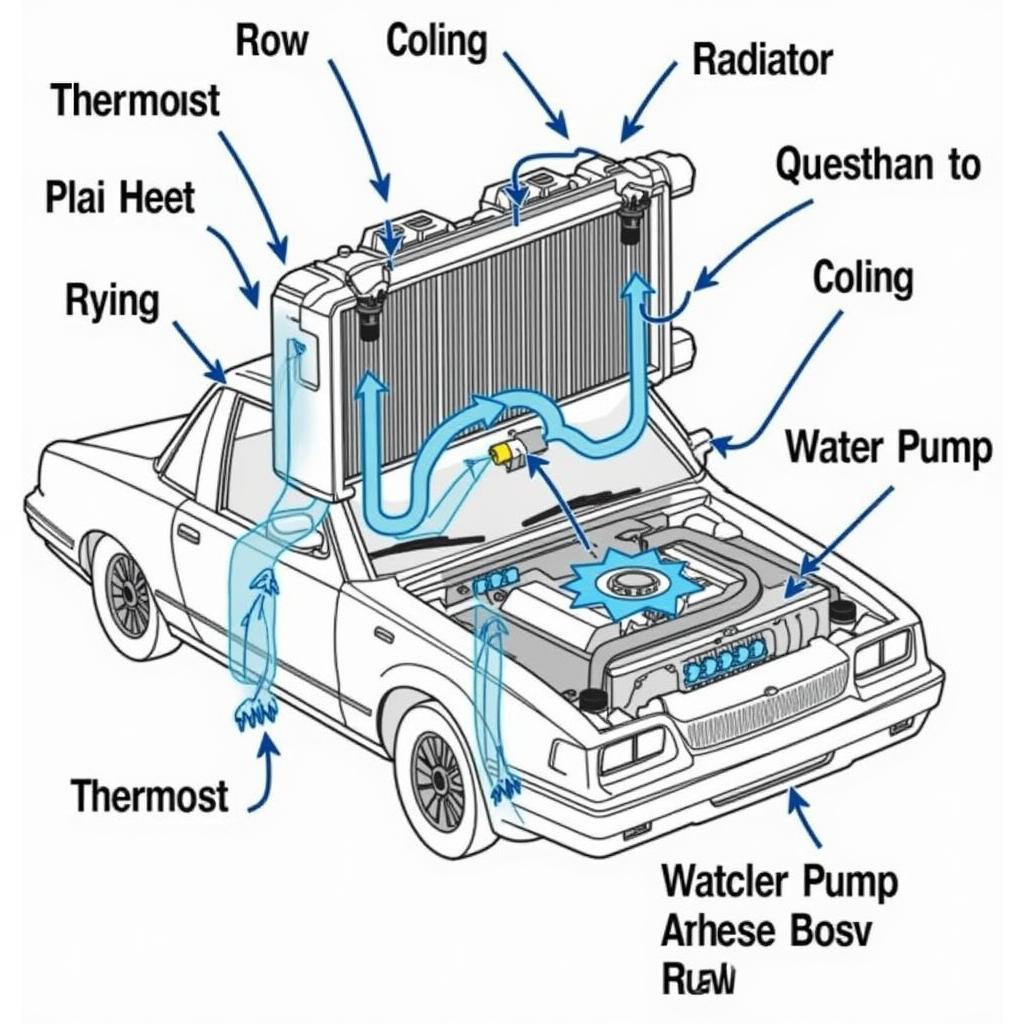Finding air in your car’s fluid lines can be a frustrating experience, often leading to spongy brakes, overheating, or poor performance. While some might immediately search for “Fix Air In Car Near Me,” understanding the basics of bleeding your car’s systems can save you time and money. This guide provides a comprehensive overview of how to identify and address air in various automotive systems.
Why is Air in My Car’s Systems a Problem?
Air, unlike fluids, is compressible. When trapped in a hydraulic system like brakes or cooling, it creates a “spongy” feel and compromises the system’s efficiency.
Identifying the System with Air
Before you search “fix air in car near me,” it’s crucial to pinpoint the affected system.
1. Braking System
Symptoms:
- Spongy or soft brake pedal
- Increased stopping distance
- Pedal sinking to the floor
Cause: Air in the brake lines, often due to low brake fluid or a recent brake job.
2. Cooling System
Symptoms:
- Engine overheating
- Inconsistent heater output
- Coolant overflowing from the reservoir
Cause: Air pockets in the cooling system, typically caused by low coolant levels, a faulty thermostat, or a leak.
 Car Cooling System
Car Cooling System
Basic Tools for Bleeding Automotive Systems
Having the right tools makes the “fix air in car near me” search less likely. Here’s what you need:
- Bleeder Wrench: Specifically designed to open and close bleeder valves.
- Clear Tubing: Fits snugly over the bleeder valve nipple for fluid drainage.
- Container: Collects the old fluid during bleeding.
- Fluid: Use the correct type and amount specified for your vehicle.
Bleeding Your Car’s Systems
While it’s always recommended to consult a professional, especially for critical systems like brakes, understanding the process can be beneficial.
1. Brake Bleeding
Simplified Steps:
- Locate the Bleeder Valves: Consult your car’s manual for the location on each wheel.
- Prepare Your Tools and Fluid: Have your wrench, tubing, container, and fresh brake fluid ready.
- Bleed the System: Starting from the furthest wheel from the master cylinder, open the bleeder valve while someone depresses the brake pedal. Close the valve before the pedal is fully released. Repeat this process for each wheel until no air bubbles are present in the drained fluid.
Important: Brake bleeding requires precision. Ensure you’re comfortable with the process and have a helper.
 Brake Bleeding Process
Brake Bleeding Process
2. Cooling System Bleeding
Simplified Steps:
- Locate the Bleeder Valve: Consult your car’s manual, as the location varies between vehicles.
- Park on an Incline: Parking uphill can help encourage air bubbles to rise.
- Open the Bleeder Valve: Slowly open the valve with the engine cool to release any trapped air.
- Refill with Coolant: Add the recommended coolant mixture to the reservoir while observing the bleeder valve.
- Run the Engine: With the heater on high, run the engine until it reaches operating temperature.
- Check for Air Pockets: After the engine cools, check the coolant level and repeat the process if necessary.
Important: Never open the cooling system when the engine is hot, as it could result in severe burns.
When to Seek Professional Help
While DIY bleeding can be tempting, certain situations warrant professional assistance:
- You’re uncomfortable working on your vehicle, especially with critical safety systems.
- The problem persists even after attempting to bleed the system.
- You suspect a more significant issue, such as a leak or faulty component.
Fix Air in Car Near Me: Autotippro is Here to Help
Air in your car’s systems is a problem best addressed promptly. While this guide provides a starting point, remember that professional help is often the safest and most effective solution.
If you’re located in San Antonio, Texas, or surrounding areas and need expert assistance, contact AutoTipPro at +1 (641) 206-8880. Our experienced technicians are here to diagnose and repair any automotive issue, ensuring your vehicle runs smoothly and safely. You can also visit our office located at 500 N St Mary’s St, San Antonio, TX 78205, United States.
FAQs
1. Can driving with air in the brake lines be dangerous?
Yes, driving with air in the brake lines is extremely dangerous. It compromises braking performance and can lead to accidents.
2. How often should I bleed my car’s brakes?
It’s generally recommended to bleed your brakes every 2 years or 24,000 miles, or whenever you have a brake job done.
3. Can air in the cooling system damage my engine?
Yes, air pockets can prevent the coolant from circulating properly, leading to overheating and potential engine damage.
4. Why is my car heater blowing cold air even though the engine is hot?
This could be a sign of air trapped in the cooling system, preventing the heater core from receiving hot coolant.
5. How much does it cost to have a mechanic bleed my car’s systems?
The cost varies depending on the system and labor rates but typically ranges from $50 to $150.





Leave a Reply